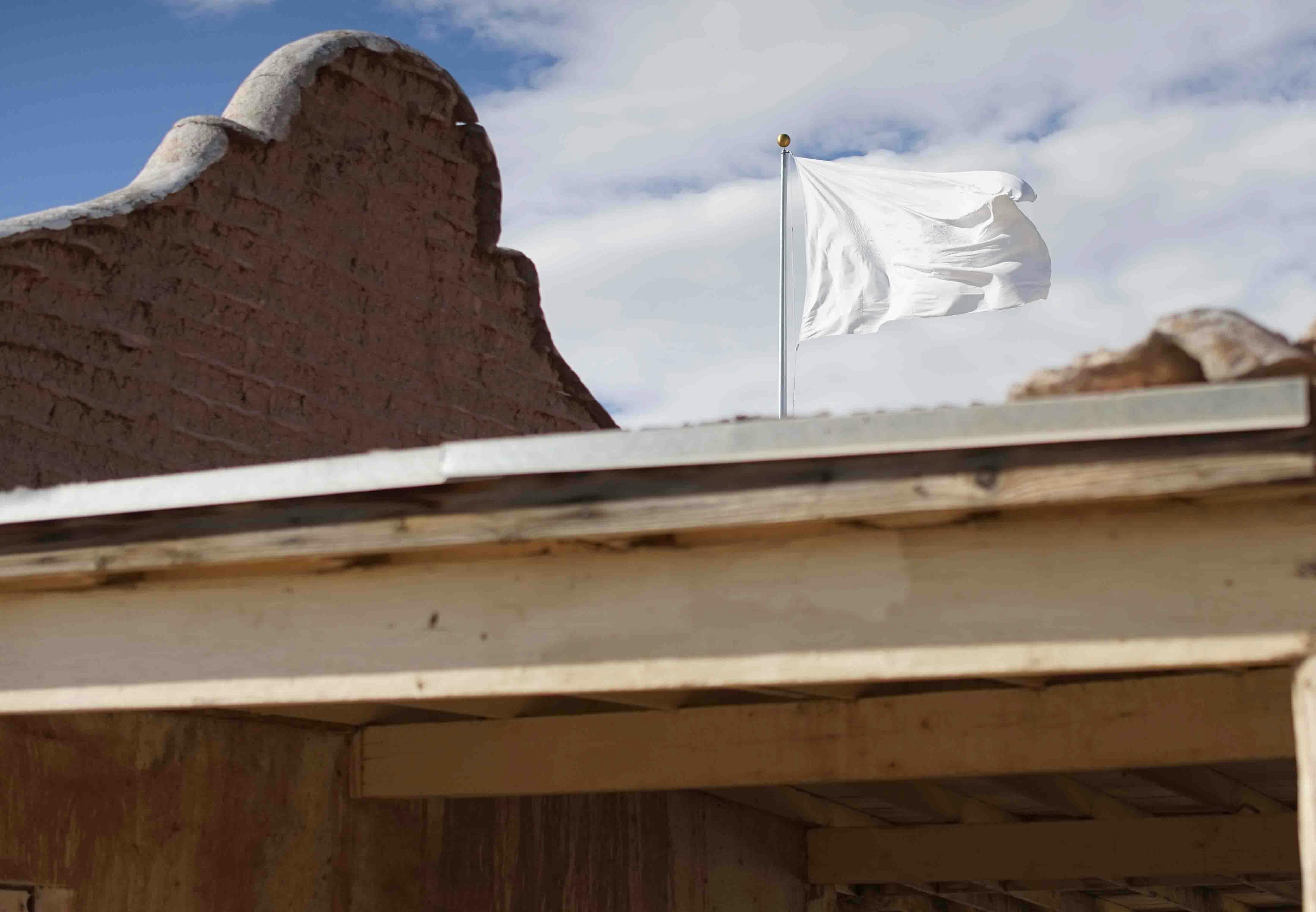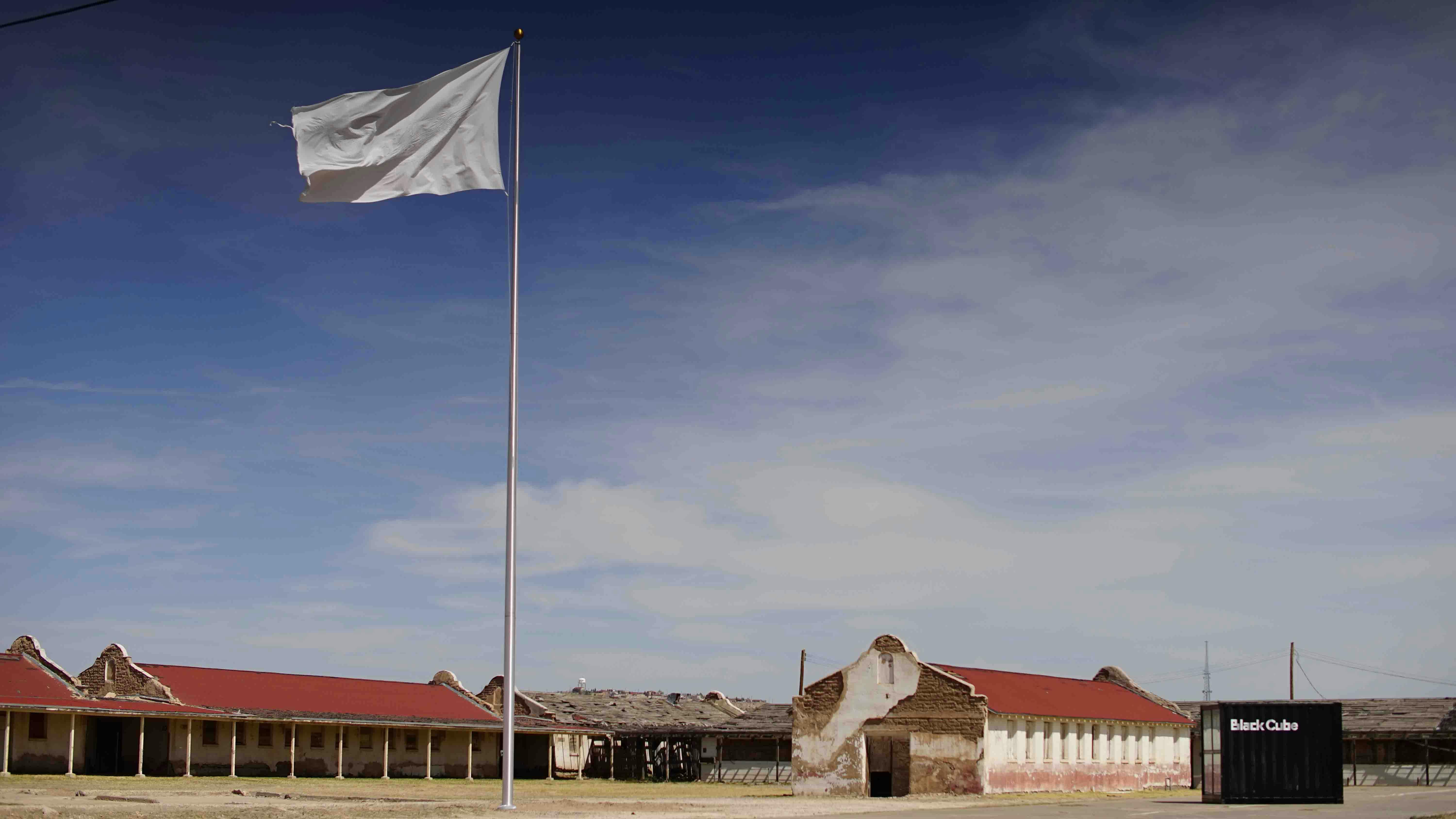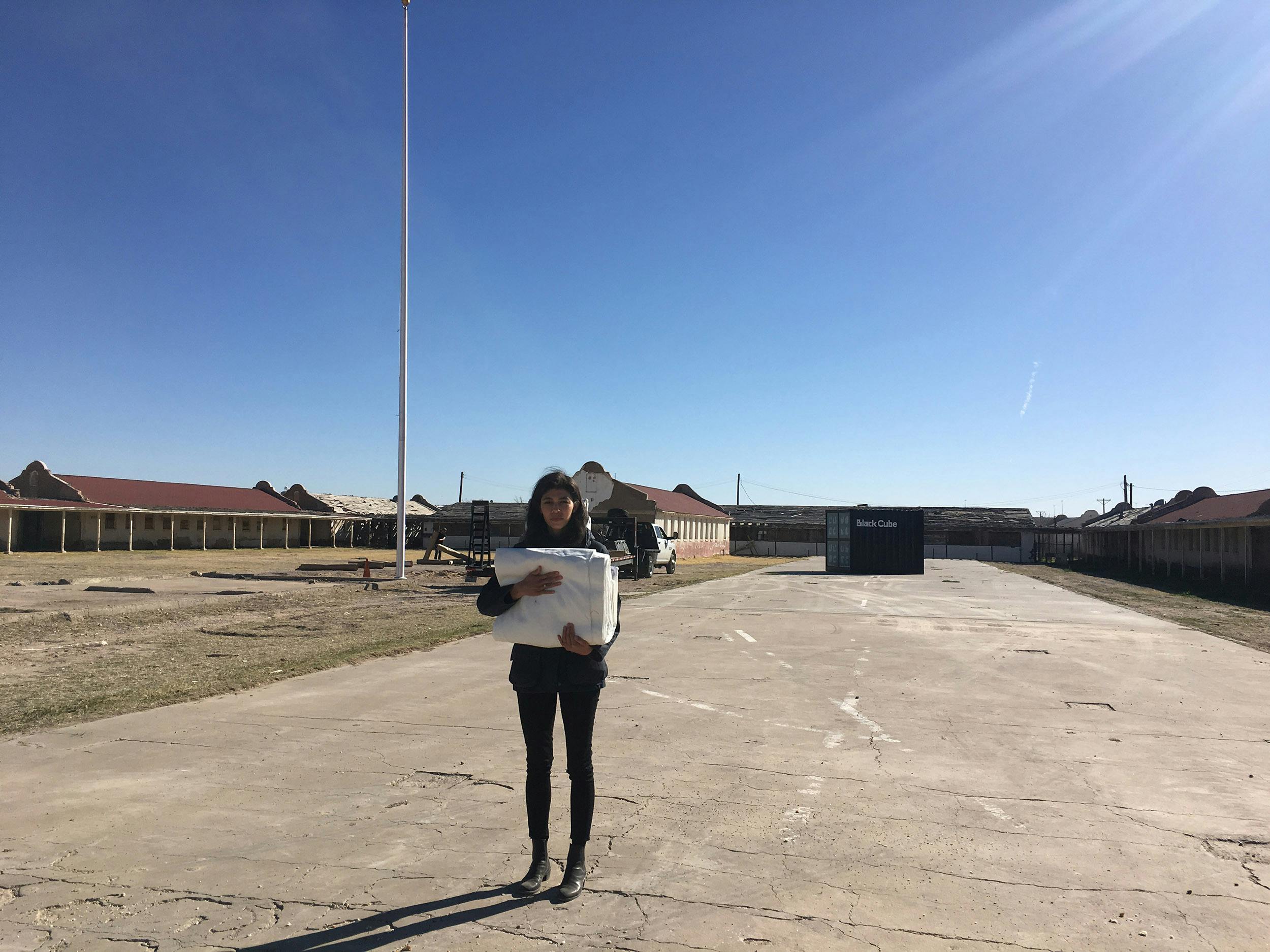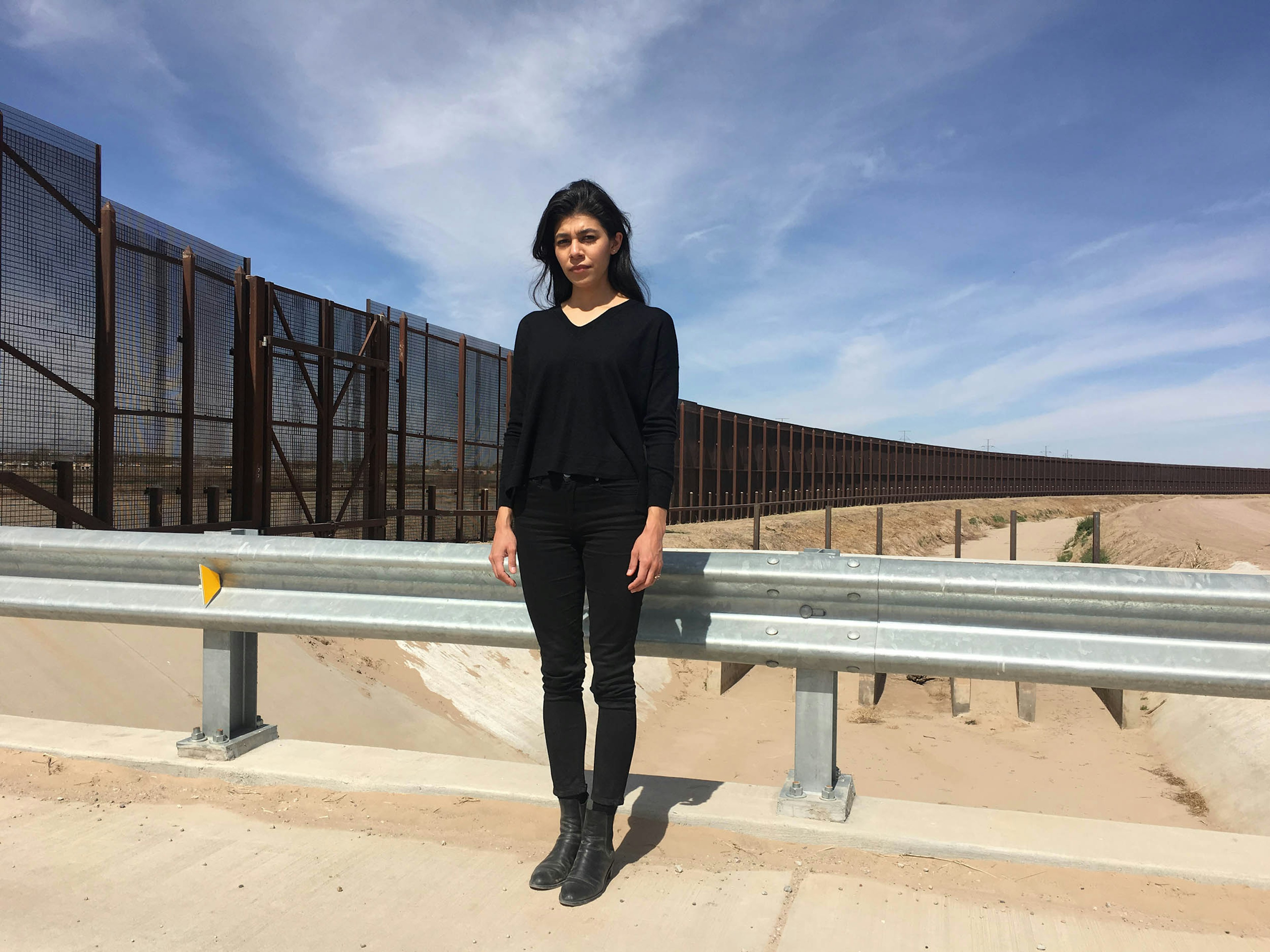Adriana Corral on Producing a Counter Monument along the U.S.—Mexico Border





Black Cube interviews Adriana Corral about her fellowship project sited at the historic Rio Vista Farm in Texas that speaks to the deeply rooted history between the United States and Mexico.
Adriana Corral on Producing a Counter Monument along the U.S.—Mexico Border
Black Cube: Can you explain your site-specific artwork for Black Cube?
Adriana Corral: Unearthed: Desenterrado is composed of a 60-foot flagpole hoisting a large, white flag at the historic Rio Vista Farm site. On each side of the flag, a single eagle is embroidered – a bald eagle and a golden eagle. Fellow artist (and fiancé), Vincent Valdez, contributed the idea and design of the two eagles in conflict. Separated by semi-translucent fabric, it is meant to suggest the dualities between the existing worlds (United States and Mexico) merely divided by a thin wall. Due to its large scale, the work will command a presence and visibility within its landscape in the surrounding El Paso and Juarez region.
During 1942-1964, the U.S. federal government established one of the largest foreign worker programs instated in U.S. history with Mexico, under the name of the “Bracero Program”, which means manual labor. The Rio Vista Farm was a processing facility to approximately 80,000 Mexican workers per year, who underwent medical and psychological examinations. Additionally, these men were fumigated with DDT prior to being relocated to one of 30 states involved in the program. With this project, my aim is to bring about a public remembrance of the early history of border control in the United States, and specifically my hometown of El Paso.
BC: What is the site and how did you come to find it?
AC: The Rio Vista Farm is the only processing facility still standing in the Nation, according to the National Trust for Historic Preservation, and is currently in the process of being recognized as a National Historic Landmark.
Prior to my project at Rio Vista, I spent a year in Berlin researching the architecture and methods used on prisoners at Auschwitz and Ravensbrück during World War II. After learning crude details, like the use of the chemical Zyklon B in lethal doses, I examined the use of this same chemical and other cyanide-based pesticides used on Mexican immigrant laborers as a delousing procedure.
Upon my return from Berlin, I visited and discussed my research with my father. During that visit, he introduced me to the history of the Rio Vista Farm and we took a trip to see the facility in person.
BC: How far is Rio Vista Farm from the U.S.—Mexico border?
AC: It’s about 2.9 miles away from Juarez, Chihuahua, Mexico. So, the farm is in close proximity to the border.
BC: Why is the flag white cotton?
AC: The decision to produce a flag fabricated from white cotton corresponds to its location, the Rio Vista Farm, which resides in the center of cotton fields. By using this material, it directly refers to the site, as well as others across America, and is an acknowledgment to immigrant laborers who support the infrastructure of this country. Referring to the many individuals who provide clothing and fabrics in the textile industry, put food on the dinner tables, construct our cities, serve in our militaries, work in our factories, and serve as nannies raising American children. Mexican labor has been, and continues to be, a part of the very fabric of this country, along with others unrecognized.
BC: How long will the flag be flown?
AC: The flag will be on display for three months, rain or shine. This particular period of time was selected because it reflects the actual life span of the cotton flag. Consequently, the flag will become worn in the wind, weather, and sun. After its installation, Black Cube and I will gift the flagpole to the city of Socorro. The white cotton flag will then travel in its deteriorated state to other museums and institutions across the country.
BC: What do you expect people will think when they see a large white flag pop up on the horizon?
AC: I hope this flag will represent peace, hope, and the dire need to confront a forgotten history – a history that can help us reflect on present-day issues. It is complex and interwoven, but by highlighting our presence as a people, and contributing force to this nation, it allows us to not be overshadowed or erased.
My wish is for the memory of those who have come before us to be seen from the horizon line, which has defined them for so long.
BC: How do you hope this artwork will be received, at a moment in time when the border is a top political debate?
AC: During the 1950’s and early 60’s, the U.S. and Mexican flags flew side by side as welcome symbols to Mexican immigrants entering Rio Vista Farm. The flags signified the unification and merger between the countries. The 60-foot flagpole I am installing will be located in the same place where the unification flags once stood and flew.
I hope that the return of a flag to this site will reflect the historical relationship between two countries that share a deeply rooted history in territory, warfare, politics, culture, capital, trade, and labor. The presence of this subject and history are fact; I believe there is a collective effort in highlighting its significant history and role.
BC: Black Cube projects are intended to help artists grow in their art practice, how has this project done so for you?
AC: Unearthed: Desenterrado is unique to my practice mostly due to its monumental scale. It is one of the most ambitious site-specific pieces I have completed to date. This installation comes on the heels of another ambitious project that I realized while in residence at Artpace in 2016, where I exhibited a work that consisted of digging a 6’ deep burial plot in the exhibition space. My fellowship with Black Cube has continued to push the boundaries of both my process and execution within my practice.
